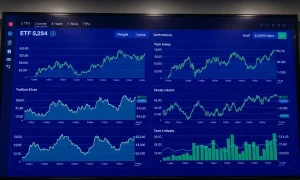Many retirees face the critical question: will their savings last through their golden years? Specifically, a couple in their 70s with $1.4 million in assets and $1,750 monthly rent payments needs careful retirement planning to ensure financial security.
Understanding Your Retirement Planning Needs
Effective retirement planning requires analyzing multiple factors. First, consider your monthly expenses beyond rent. Additionally, healthcare costs typically increase with age. Furthermore, inflation impacts purchasing power over time. Consequently, a comprehensive approach proves essential.
Sustainable Withdrawal Strategies for Retirement
The 4% rule provides a classic retirement planning framework. This strategy suggests withdrawing $56,000 annually from $1.4 million. However, your actual rent represents $21,000 yearly. Therefore, approximately 37.5% of withdrawals cover housing costs alone.
- Essential expenses: Housing, food, utilities, healthcare
- Discretionary spending: Travel, entertainment, gifts
- Emergency fund: Unexpected medical or repair costs
- Inflation protection: Rising cost of living adjustments
Investment Allocation for Retirement Security
Proper asset allocation strengthens retirement planning outcomes. Typically, seniors should maintain conservative investments. However, some growth orientation helps combat inflation. Moreover, diversification reduces market risk significantly. Consequently, balanced portfolios often perform best.
Healthcare Considerations in Retirement Planning
Healthcare expenses dramatically affect retirement planning. Medicare covers many costs but not everything. Importantly, long-term care insurance might be necessary. Furthermore, prescription drug costs can be substantial. Therefore, budgeting for medical expenses remains crucial.
Rent vs Mortgage in Retirement Scenarios
Renting offers flexibility in retirement planning. Unlike homeowners, renters avoid maintenance costs. However, rent increases pose inflation risks. Conversely, mortgage-free homeowners have fixed housing costs. Thus, each option presents different financial implications.
Creating a Comprehensive Retirement Income Plan
Successful retirement planning involves multiple income streams. Social Security benefits provide foundation income. Additionally, investment withdrawals supplement monthly needs. Furthermore, required minimum distributions affect tax planning. Ultimately, integrated approaches work most effectively.
Monitoring and Adjusting Your Retirement Strategy
Regular reviews enhance retirement planning effectiveness. Market fluctuations impact portfolio values. Similarly, life changes alter spending patterns. Consequently, annual checkups ensure plan sustainability. Moreover, professional guidance often proves valuable.
Frequently Asked Questions
How long will $1.4 million last in retirement?
$1.4 million can last 25-30 years using a 4% withdrawal strategy, depending on investment returns, inflation, and spending patterns.
Should we consider buying instead of renting?
Homeownership eliminates rent inflation risk but adds maintenance costs. The decision depends on local housing markets and personal preferences.
What withdrawal rate is safe for retirees?
Most experts recommend 3-4% annually, adjusted for inflation. However, individual circumstances may warrant lower or higher rates.
How should we invest our retirement savings?
A balanced portfolio with 40-60% stocks and the rest in bonds and cash typically suits retirees seeking growth and income.
When should we take Social Security benefits?
Delaying benefits until age 70 increases monthly payments by approximately 8% annually beyond full retirement age.
Do we need long-term care insurance?
Long-term care insurance protects assets from nursing home costs. Premiums vary based on age and health status at purchase.








